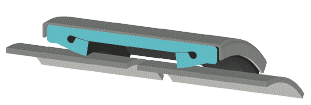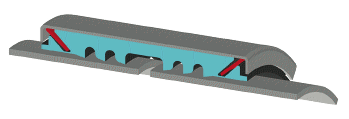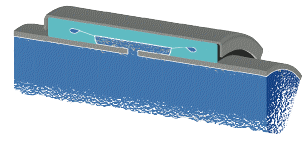 |
||||
 |
||||
 |
||||
 |
||||

Sealing Concepts
Teekay Couplings are available in two configurations, Axilock and Axiflex:
Each coupling (whether Axilock or Axiflex) consists of a casing, a gasket and a lockpart. The purpose of the casing is to house the gasket and to press it onto the pipe surface when the lockpart is closed. The lockpart is designed to pull the two ends of the casing together circumferentially around the pipe. In order to achieve this, the coupling is labeled clearly with a torque figure which ensures that the gasket is compressed sufficiently against the pipe surface.
The Axilock has two anchor rings which are placed adjacent to, but separate from, the sealing mechanism.
The Axiflex has two thick sealing lips which allow for pipe expansion and contraction.
As the lockpart is tightened the sealing lips are pressed against the pipe surface to form a seal. At the same time the two anchor rings penetrate the rubber, bite into the two pipes and prevent them from pulling apart, whether by external loading or internal pressure. The end seal is also pressed against the pipe surface, which protects both the anchor ring and the section of the pipe where the anchor rings have bitten, from any possible external corrosion.
The sealing lips press against the pipe surface and form lip seals. The lip seals are designed to resist the internal pressure in the pipes. As the pressure increases, the lip seals swell to seal more tightly against the pipe surface.